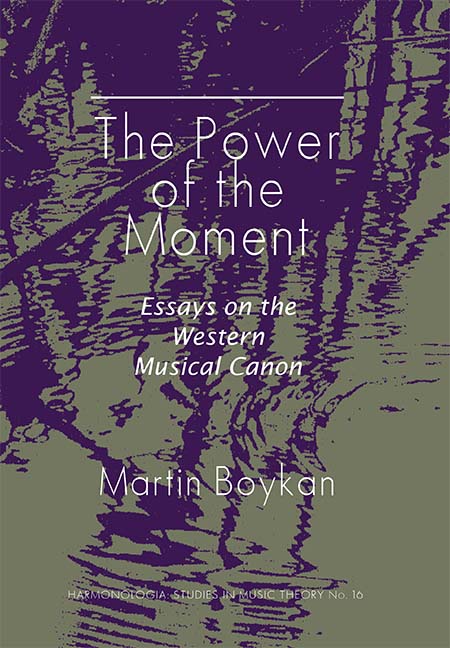Book contents
- Frontmatter
- Contents
- Acknowledgements
- Martin Boykan Biography
- I Introduction: Some Words About Theory
- II The Power of The Moment: The Hammerklavier and the Archduke
- III Voice and Piano in Dialogue: Seven Songs from the Winterreise
- IV A Recurrent Tonality: The Meaning of the Kiss in Verdi's Otello
- V Resetting the Clock: The Scherzo of Beethoven's Fifth
- VI The Power of Every Moment: Musical Continuity in J. S. Bach
- VII Coda
I - Introduction: Some Words About Theory
- Frontmatter
- Contents
- Acknowledgements
- Martin Boykan Biography
- I Introduction: Some Words About Theory
- II The Power of The Moment: The Hammerklavier and the Archduke
- III Voice and Piano in Dialogue: Seven Songs from the Winterreise
- IV A Recurrent Tonality: The Meaning of the Kiss in Verdi's Otello
- V Resetting the Clock: The Scherzo of Beethoven's Fifth
- VI The Power of Every Moment: Musical Continuity in J. S. Bach
- VII Coda
Summary
It is said that when Schoenberg first laid eyes on Schenker's graph of the Eroica he exclaimed, “But where are my favorite parts?” True or not, this story has been endlessly repeated, usually with an indulgent chuckle about the naiveté of composers. Schoenberg, of course, began his career at a time when classical music was revered as supreme among the arts. Kandinsky summed up the general feeling when he wrote that “Musical sound acts directly on the soul and finds an echo there because, though to varying extents, music is innate in man.” For decades the symbolist movement in literature had been trying to connect with that inner world of the spirit by reshaping language. Abstraction was in the air for visual artists, and as Walter Pater famously said, “all art aspires to the condition of music.” I am sure that if people of that time could have seen a graph of the Eroica, they would have reacted just like Schoenberg. Their response to music was so immediate and unquestioning that a reductive graph -—not to mention one with a resemblance to graphs of other pieces—would have seemed like an act of vandalism.
Fast forward now to the year 1956 when Leonard Meyer published his influential book entitled Emotion and Meaning in Music, and you will see how the entire framework for discourse about music has changed. It can no longer be assumed that music “acts directly on the soul” (aside from the embarrassment of that last word). Only a careful investigation into the structure of the human mind seems capable of explaining how acoustic stimuli without specific outside references could be of interest. To ascribe meaning to an art form so remote from our existential concerns has become a challenge, and if “meaning,” as Meyer wrote, “is to have any signification at all as applied to music, then it must have the same signification as when applied to other kinds of experience.”
- Type
- Chapter
- Information
- The Power of the MomentEssays on the Western Musical Canon, pp. 1 - 12Publisher: Boydell & BrewerPrint publication year: 2011



